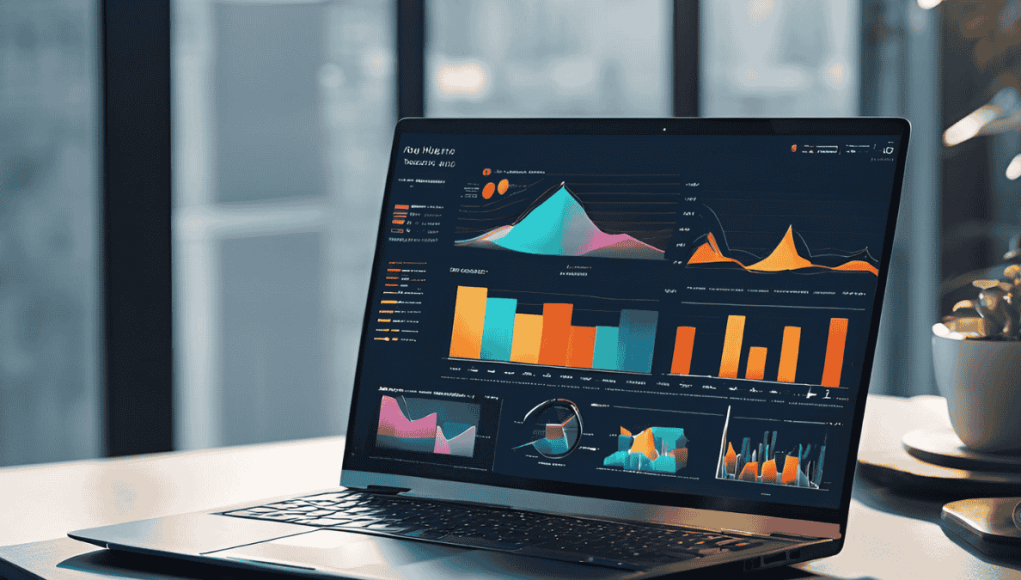In today’s data-driven world, organizations must harness the power of artificial intelligence (AI) to analyze large volumes of data effectively. AI tools for data analytics are reshaping the way businesses handle data by providing actionable insights, improving decision-making, and automating complex processes. These tools utilize machine learning algorithms, natural language processing, and predictive analytics to analyze massive datasets, detect patterns, and make predictions that drive business success.
With an increasing number of AI-powered data analytics tools available, choosing the right one can be overwhelming. Each tool offers unique features suited for different industries, from real-time analytics to automated reporting and data visualization. In this guide, we will explore the top 15 AI tools for data analytics, highlighting their benefits and how they can revolutionize data handling for organizations of all sizes.
Benefits of Using AI Tools for Data Analytics
1. Enhanced Decision-Making
AI tools for data analytics can process and analyze data faster than humans, providing real-time insights. This enables businesses to make data-driven decisions more efficiently and accurately, reducing the risk of human error and enhancing strategic planning.
2. Automation of Data Processes
One of the major benefits of AI in data analytics is automation. These tools can automate repetitive tasks such as data cleaning, sorting, and reporting, freeing up human resources to focus on more critical and creative tasks, leading to greater productivity.
3. Improved Accuracy and Predictive Capabilities
AI-powered tools use machine learning algorithms to detect patterns and trends that may not be immediately visible to the human eye. This allows businesses to not only understand current data but also predict future trends with greater accuracy, which is essential for forecasting and planning.
4. Scalability and Efficiency
As data grows, AI tools can scale to manage increasing volumes of information without compromising speed or performance. They allow businesses to handle big data effortlessly, ensuring that analytics processes remain efficient regardless of the size of the dataset.
5. Advanced Data Visualization
AI analytics tools often include sophisticated visualization capabilities, enabling users to present complex data in an intuitive, easy-to-understand format. This allows non-technical stakeholders to comprehend insights quickly and make informed decisions without getting bogged down in technicalities.
The 15 Best AI Tools for Data Analytics
With the wide range of AI tools available for data analytics, businesses have ample options to choose from based on their specific needs, whether it’s data visualization, predictive analytics, or real-time processing. Here’s a curated list of the top 15 AI tools that stand out for their performance, features, and versatility in handling complex data analytics tasks.
1. Google Cloud AI Platform
Google Cloud AI Platform is a comprehensive service suite for building, deploying, and managing machine learning models. It integrates with other Google Cloud products, making it ideal for organizations using Google’s ecosystem for large-scale data analysis.
Features:
- Managed Machine Learning: Build and deploy models using pre-built and custom frameworks.
- Pre-trained APIs: Access powerful pre-built machine learning models for tasks like vision, natural language, and translation.
- AutoML: Use Google’s cutting-edge AutoML to automate the creation of high-accuracy models.
- TensorFlow Integration: Native support for TensorFlow models and other open-source frameworks.
Pros:
- Extensive range of machine learning tools.
- Seamless integration with other Google services.
- Highly scalable for enterprise-level applications.
Cons:
- Steeper learning curve for beginners.
- Costs can increase with large datasets and extensive usage.
2. DataRobot
DataRobot is a popular automated machine learning platform that simplifies model building by automating the process of data preparation, model training, and evaluation. It’s especially useful for data scientists and business analysts.
Features:
- Automated Machine Learning (AutoML): Automatically builds, tests, and deploys models without manual coding.
- Model Deployment: Provides easy deployment of AI models in production environments.
- Explainable AI: Offers insights into how models work and why decisions are made.
- Time Series Analysis: Includes advanced time-series forecasting capabilities.
Pros:
- Simplifies complex machine learning tasks.
- User-friendly interface with minimal need for manual coding.
- Strong support for AutoML and explainability.
Cons:
- Expensive pricing, making it less accessible for smaller companies.
- Limited flexibility for custom model tuning.
3. Microsoft Azure Machine Learning
Microsoft Azure Machine Learning is a cloud-based platform designed to support the entire machine learning lifecycle, from building to deployment. It is highly scalable and ideal for enterprises that use Microsoft’s cloud infrastructure.
Features:
- Model Training: Scalable cloud-based training for machine learning models.
- MLOps: Continuous integration and delivery for machine learning.
- Automated ML: Supports AutoML for faster model building.
- Azure Notebooks Integration: Collaborate and build models using Jupyter notebooks.
Pros:
- Excellent integration with other Microsoft tools and services.
- Scalable for large enterprises.
- Supports popular open-source frameworks.
Cons:
- Requires deep understanding of Azure infrastructure.
- Higher costs for extensive model training.
4. H2O.ai
H2O.ai is an open-source AI and machine learning platform known for its speed and ease of use. It provides a range of tools for data scientists and business users to build and deploy machine learning models.
Features:
- AutoML: Automates the model building process by training and tuning models with minimal intervention.
- H2O Driverless AI: An enterprise-grade tool offering feature engineering, visualization, and predictive modeling.
- Open-Source Framework: Extensive support for Python, R, and other languages.
- Cloud and On-Premise Deployments: Flexible deployment options for different business needs.
Pros:
- Strong community support and documentation.
- Fast and scalable, even for large datasets.
- Free open-source version available.
Cons:
- Limited visualization options compared to other platforms.
- Steep learning curve for those unfamiliar with machine learning.
5. Tableau
Tableau is one of the leading data visualization tools that also integrates AI-driven analytics to provide actionable insights. It allows users to create interactive and shareable dashboards from data.
Features:
- Data Visualization: Create interactive, real-time dashboards with ease.
- Ask Data (Natural Language Processing): AI-powered natural language interface to query your data in plain language.
- Data Preparation: Tools for cleaning and organizing data for visualization.
- Collaboration Tools: Share and collaborate on reports in real-time.
Pros:
- Highly intuitive and user-friendly interface.
- Excellent for data visualization and storytelling.
- AI-powered features for natural language querying.
Cons:
- Limited AI and predictive analytics capabilities compared to dedicated AI platforms.
- Premium pricing.
6. IBM Watson Studio
IBM Watson Studio is a powerful platform for data scientists, developers, and business analysts to collaborate on AI projects. It provides tools for model building, training, and deployment in a secure environment.
Features:
- Collaboration Tools: Facilitates teamwork between data scientists, analysts, and developers.
- Watson AutoAI: Automates model building and hyperparameter optimization.
- Visual Modeling: Drag-and-drop interface for designing models without coding.
- ModelOps: Manage the lifecycle of machine learning models efficiently.
Pros:
- Strong enterprise-grade features.
- Excellent security and governance.
- Integrated with IBM’s cognitive services like Watson NLP.
Cons:
- Costly for smaller teams and businesses.
- Learning curve for advanced features.
7. KNIME
KNIME is an open-source analytics platform for creating data science workflows. It allows for visual programming to combine data manipulation, analytics, and machine learning.
Features:
- Visual Workflow Builder: Drag-and-drop interface to create data science workflows.
- Extensive Integration: Supports a wide range of data sources and tools.
- Community Extensions: Large collection of community-built plugins and extensions.
- Data Manipulation Tools: Advanced data cleaning and transformation features.
Pros:
- Completely free and open-source.
- Extensive support for different data types and models.
- Easy integration with popular tools like R and Python.
Cons:
- Interface can be overwhelming for beginners.
- Performance issues with large datasets.
8. Alteryx
Alteryx is a powerful data analytics platform that combines data preparation, blending, and advanced analytics with AI and machine learning capabilities to deliver deep insights.
Features:
- Data Preparation: Automates data cleaning and blending tasks.
- Predictive Analytics: Integrates machine learning models to predict outcomes.
- Spatial Analytics: Provides tools for mapping and geospatial analysis.
- AI-Powered Analytics: Automated machine learning for quick predictions.
Pros:
- Great for both data analysts and data scientists.
- Excellent automation for repetitive data tasks.
- Strong support for geospatial data analytics.
Cons:
- Premium pricing, especially for smaller businesses.
- Not as flexible for custom model development.
9. RapidMiner
RapidMiner is a leading open-source data science platform that helps with everything from data preparation to machine learning and deployment. It’s suitable for users at all levels, offering both a visual workflow editor and script-based coding.
Features:
- Data Prep and ETL: Automates data preparation, transformation, and cleaning.
- Auto Model: Automates the creation and evaluation of machine learning models.
- Visual Workflow Designer: Drag-and-drop tool for building models without coding.
- Text Mining and Sentiment Analysis: Extract and analyze textual data.
Pros:
- User-friendly for beginners with its visual workflows.
- Large open-source community and resources.
- Good for both academic and enterprise use.
Cons:
- Can be slow with very large datasets.
- Limited support for deep learning models.
10. Amazon SageMaker
Amazon SageMaker is a cloud-based machine learning platform designed to build, train, and deploy models at scale. It offers tools for the entire machine learning lifecycle.
Features:
- Managed Training: Train machine learning models with built-in algorithms and custom code.
- Model Deployment: Easily deploy models to production with one click.
- AutoML: Supports AutoML for model optimization.
- Notebook Integration: Fully integrated with Jupyter notebooks.
Pros:
- Fully managed and scalable solution.
- Great integration with other AWS services.
- Supports custom machine learning models.
Cons:
- Complex pricing structure.
- Requires AWS expertise.
11. SAS Viya
SAS Viya is a cloud-based platform for AI and analytics that allows users to prepare, analyze, and visualize data with advanced analytics and machine learning capabilities.
Features:
- Advanced Analytics: Provides tools for machine learning, natural language processing, and forecasting.
- Scalability: Highly scalable cloud-based platform.
- AutoML: Automates the process of training and tuning machine learning models.
- Collaborative Workspaces: Enables teams to work together on projects.
Pros:
- Industry-leading analytics capabilities.
- Strong support for statistical analysis.
- Scalable and secure.
Cons:
- High cost.
- Requires expertise in SAS tools.
12. Qlik Sense
Qlik Sense is a powerful business intelligence tool that leverages AI-driven analytics to offer actionable insights. It’s known for its ability to handle complex data relationships and make them easy to analyze.
Features:
- Augmented Analytics: Uses AI to guide users through data and highlight insights.
- Data Visualization: Create interactive dashboards and visualizations.
- Self-Service Analytics: Empower non-technical users to explore and analyze data.
- Collaboration Tools: Share insights and dashboards with teams.
Pros:
- User-friendly and intuitive interface.
- Strong focus on self-service and ease of use.
- Excellent for data exploration.
Cons:
- Limited machine learning capabilities.
- High cost for advanced features.
13. TIBCO Spotfire
TIBCO Spotfire is an analytics platform with powerful data visualization and predictive analytics capabilities. It supports real-time analytics and collaboration.
Features:
- Data Visualization: Create interactive charts and dashboards for data exploration.
- Real-Time Analytics: Analyze data in real-time with fast, in-memory processing.
- Predictive Analytics: Leverage machine learning models to predict outcomes.
- Collaborative Analytics: Share insights and collaborate in real-time.
Pros:
- Excellent for real-time data analytics.
- Strong visualization tools.
- Good for predictive analytics.
Cons:
- Complex interface for new users.
- High cost for full functionality.
14. MonkeyLearn
MonkeyLearn is a no-code AI tool for text analysis, offering features for sentiment analysis, topic classification, and keyword extraction. It is designed for business users who want to analyze unstructured text data.
Features:
- Text Classification: Automatically categorize text into predefined labels.
- Sentiment Analysis: Determine the sentiment of customer feedback or social media data.
- Keyword Extraction: Extract key terms and topics from large datasets.
- No-Code Interface: Allows non-technical users to build AI models easily.
Pros:
- Easy to use for non-technical users.
- Specialized for text analysis.
- No-code model building.
Cons:
- Limited to text analysis.
- Not suitable for complex AI projects.
15. BigML
BigML is a machine learning platform that provides a simple and easy-to-use interface for creating predictive models. It’s aimed at making machine learning accessible to non-experts.
Features:
- One-Click Models: Quickly build models with a single click.
- Ensemble Methods: Combine multiple models to improve performance.
- Time Series Forecasting: Advanced tools for predicting future trends.
- Visualization Tools: Offers data visualization for better understanding of model behavior.
Pros:
- Extremely user-friendly interface.
- Affordable pricing.
- Good for beginners and non-experts.
Cons:
- Limited customization options for advanced users.
- Not suitable for large-scale enterprise use.
Conclusion
The integration of AI tools into data analytics has become an essential part of modern business strategy. These tools not only provide faster and more accurate insights but also automate complex processes, allowing companies to stay competitive in a data-driven world. From enhanced decision-making to advanced visualization, AI tools empower businesses to transform raw data into valuable knowledge, driving growth and innovation. By selecting the right AI tools for your data analytics needs, you can harness the full potential of your data and propel your organization forward.





